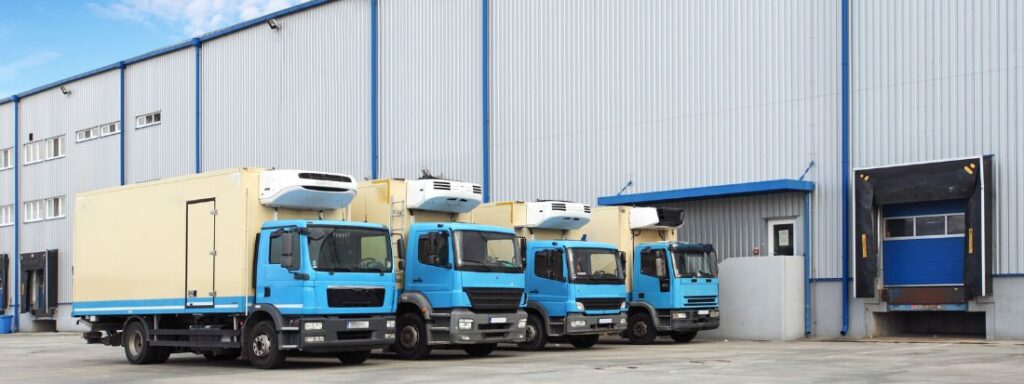Warehouse Receiving Process: Importance, Challenges and Best Practices

What is Warehouse Receiving Process?
The warehouse receiving process is the first step in the supply chain, and it involves accepting and verifying incoming shipments of goods or materials. Specifically, the process includes inspecting the goods, comparing them to the purchase order, and ensuring that everything is in good condition before being stored in the warehouse. Moreover, the receiving process is essential to maintain inventory accuracy, minimize errors, and ensure timely delivery to customers.
The Importance of a Smooth Receiving Process
A smooth warehouse receiving process is crucial for the overall efficiency of the supply chain. Conversely, a poorly managed receiving process can create bottlenecks, delays, and errors that negatively impact the entire operation. Therefore, businesses should strive to make receiving efficient and accurate. The following are some of the key benefits of maintaining an effective receiving process:
1. Improved Inventory Accuracy
By verifying incoming shipments and ensuring they match the purchase order, you can minimize inventory discrepancies. As a result, overall accuracy improves and errors are significantly reduced.
2. Faster Processing
With a streamlined receiving process, you can quickly move inventory to storage or processing. Consequently, this reduces delays and, in turn, improves overall efficiency.
3. Better Quality Control
Inspecting incoming shipments allows you to identify any damaged or defective items. As a result, the likelihood of customer complaints and returns decreases significantly.
4. Enhance Customer Satisfaction
By delivering products on time and with accuracy, you can enhance customer satisfaction. Furthermore, this helps build a positive reputation for your business and strengthens long-term customer relationships.
Pre-Receiving Preparation
Before the actual receiving process begins, it is essential to prepare the warehouse for incoming shipments. This preparation ensures a smoother workflow and minimizes potential delays. Specifically, it includes making sure that the storage area is clean, organized, and ready to receive new inventory. Moreover, businesses should pay attention to several important pre-receiving tasks:
Clean and organize the storage area, so that new inventory can be stored efficiently.
Ensure there is enough space to accommodate incoming shipments without causing congestion.
Prepare the necessary equipment, such as pallet jacks, forklifts, and hand trucks, to handle goods effectively.
Train the receiving team on proper procedures to improve accuracy and consistency.
Create a schedule for incoming shipments and prioritize critical items to avoid disruptions in operations.
Receiving Procedures
The warehouse receiving process consists of several essential procedures designed to ensure incoming shipments are accurately received and processed. In particular, the following are some of the standard receiving procedures:
Inspection

The first step in the receiving process is to inspect the incoming shipments. This includes checking for damage, verifying the order quantity, and ensuring that the items match the purchase order. If there is any damage or discrepancies, the receiving team should notify the supplier immediately.
Checking Quantity
The next step is to verify the quantity of items received against the purchase order. This includes checking the number of items, weight, and dimensions to ensure that everything matches the purchase order.
Labelling and Identification

Once the items have been inspected and counted, they need to be labeled and identified. This includes labeling the items with barcodes, serial numbers, and any other relevant information that will be used to track them in the inventory management system.
Sorting
After labelling, the items are sorted based on their characteristics, such as size, weight, fragility, and expiration dates. Sorting helps to optimize storage space and facilitates easy retrieval when needed.
Storage
Once the items have been inspected, labeled, and sorted, they are ready for storage in the warehouse. The receiving team should ensure that items are stored in the correct location, based on their characteristics, to prevent damage and facilitate easy retrieval.
Data Entry
The final step in the receiving process is data entry. This involves updating the inventory management system with the relevant information about the received items, including the item name, description, quantity, and location. Accurate data entry is essential to maintain inventory accuracy and facilitate efficient order processing.
Common Warehouse Receiving Challenges
Despite the importance of a smooth receiving process, there are several challenges that warehouse managers may encounter. Some of the common challenges include:
- Delayed Shipments: Delays in shipments can cause bottlenecks in the receiving process and impact the overall supply chain efficiency.
- Inaccurate Orders: Inaccurate orders can result in discrepancies between the purchase order and the received items, causing inventory discrepancies and order processing delays.
- Poor Communication: Poor communication between the supplier and the receiving team can cause confusion and errors during the receiving process.
- Overcrowding: Limited storage space can make it challenging to accommodate new inventory, causing congestion in the warehouse and delays in order processing.
Best Practices for Smooth Receiving Process
To overcome the challenges and optimize the warehouse receiving process, the following best practices can be implemented:
- Implement a Systematic Process: A well-defined process with clear procedures can help to streamline the receiving process and minimize errors.
- Use Technology: Utilize technology such as barcoding, RFID, and automation to increase accuracy and efficiency.
- Prioritize Communication: Establish clear communication channels between the supplier and the receiving team to avoid errors and delays.
- Equip Receiving Team: Provide training to the receiving team on the best practices for receiving, inspecting, labeling, and storing inventory.
- Optimize Storage Space: Use storage optimization techniques such as vertical storage, selective pallet racking, and automated storage systems to maximize storage space.
Conclusion
In conclusion, the warehouse receiving process is a crucial aspect of the supply chain that can impact the overall efficiency and customer satisfaction of a business. Implementing best practices such as a systematic process, utilizing technology, prioritizing communication, training the receiving team, and optimizing storage space can help to ensure a smooth receiving process and minimize errors.
Categories
- Axacute Highlights (3)
- Blog (146)
- Distribution (4)
- Features (5)
- Industry (2)
- Inventory (67)
- Manufacturing (72)
- Production (33)
- Technology (30)
- Warehouse (66)
- Wholesale (2)
Related
Benefits of an Inventory Management System
The Hidden Costs of Manual Inventory Management for SMEs
Improve Inventory Management and Cut Waste with Axacute
Smart Scanning, Smarter Manufacturing
Real-Time Warehouse Alerts: How to Prevent Stockouts
Connect Axacute to Your ERP for Smarter Operations
Intelligent Warehouse Setup
Level up your productivity
Get started with Axacute and improve your business operations.







